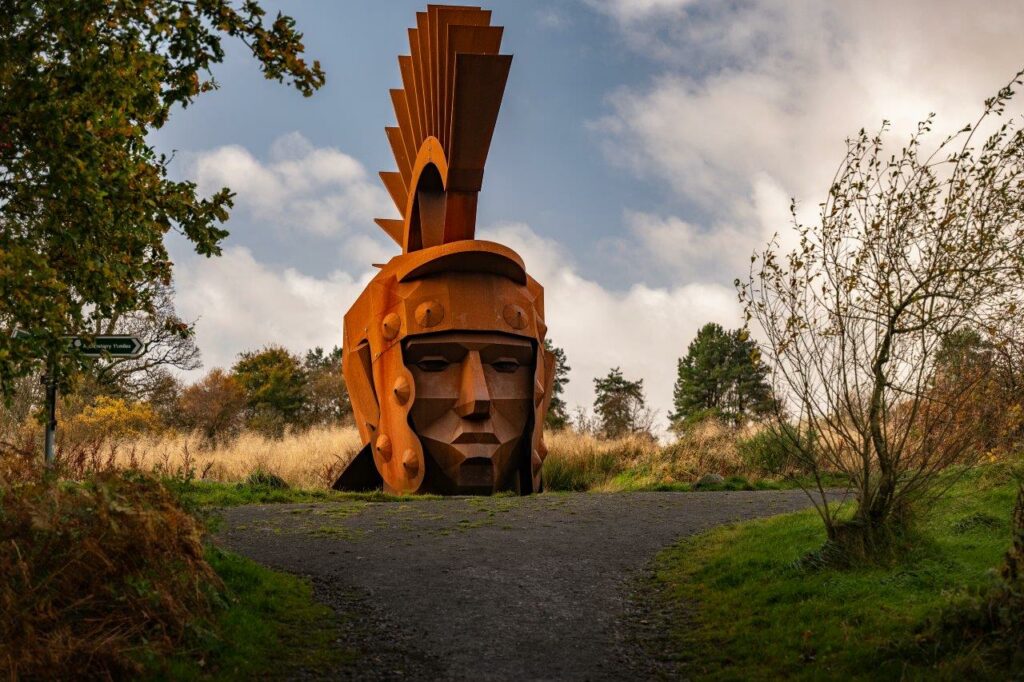Around 2,000 years ago, Antoninus Pius ordered his army in Britain to invade Scotland and successfully expanded the northernmost boundary of the already massive Roman Empire. He built a great wall that stretched 37 miles across Scotland’s central belt, separating the Roman-controlled lands to the south from the native Caledonian tribes in the north. It was a massive project.
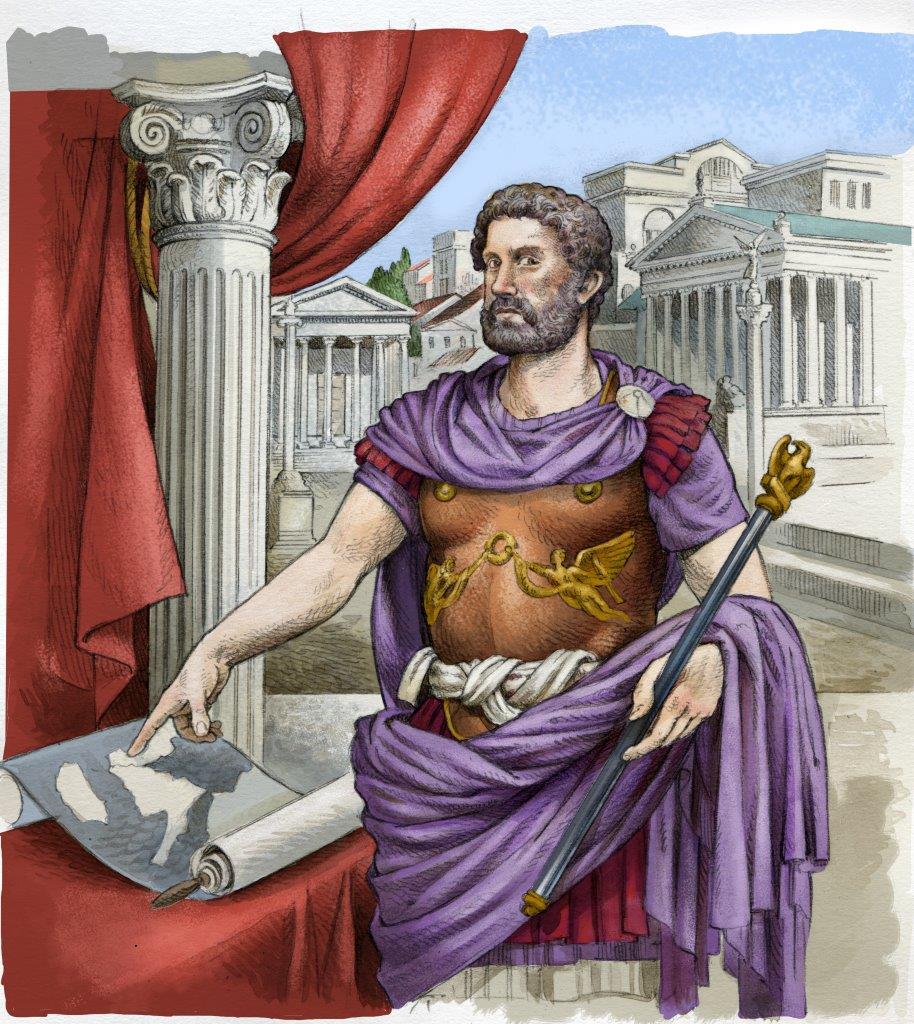
Who was Antoninus Pius? Antoninus Pius was an important Roman Emperor who lived from 86 – 161 CE. He ordered the construction of the Antonine Wall in Scotland around 142 AD.
We don’t know why, but after only two decades, the Romans abandoned it and settled along the older Hadrian’s Wall. Some people think it was too expensive to run.
But what was Roman life like along the Antonine Wall? Read on to learn about the people who lived here and how our “Go Roman” handling boxes can help you dig deeper into their history.
The Legionary Soldier
The Roman army had two types of soldiers: legionaries and auxiliaries. Many male Roman citizens would have decided to become legionary soldiers because of the good social status, regular pay, and pension after 25 years of service.
Despite this, life as a soldier wasn’t easy. Training was tough, and once completed, they could be sent far away from their home to any part of the Empire or beyond. Aside from bloody battles, soldiers also had the difficult task of building infrastructure like bridges and roads. It was the soldiers who constructed the Antonine Wall across Scotland.
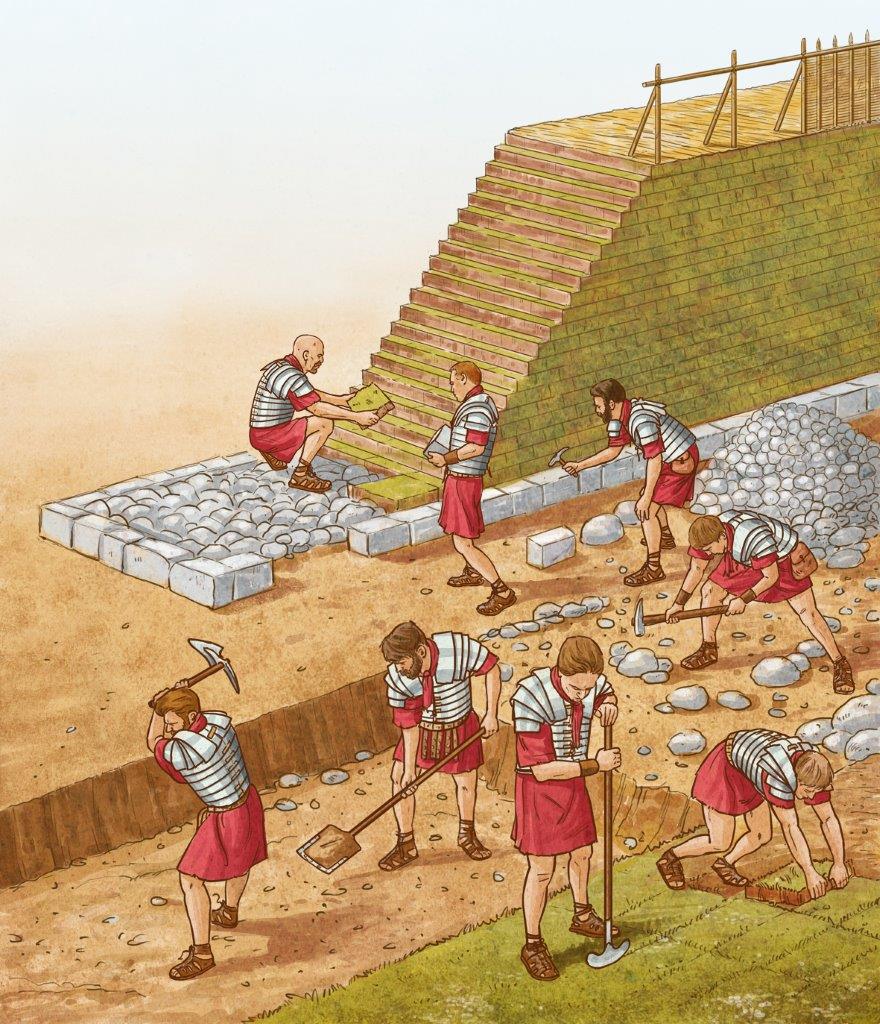
Roman soldiers building the Antonine Wall.
Legionary and auxiliary soldiers were under the command of governors who were responsible for managing conquered territories. Originally from Numidia (Alegria) in North Africa, Quintus Lollius Urbicus was appointed the governor of Britain by Emperor Antoninus Pius. He was tasked with building a wall to defend the Empire from the native Caledonian tribes living in the north. Because of his military career, Urbicus lived in many places across the Empire including Asia, Judea, and Romania!
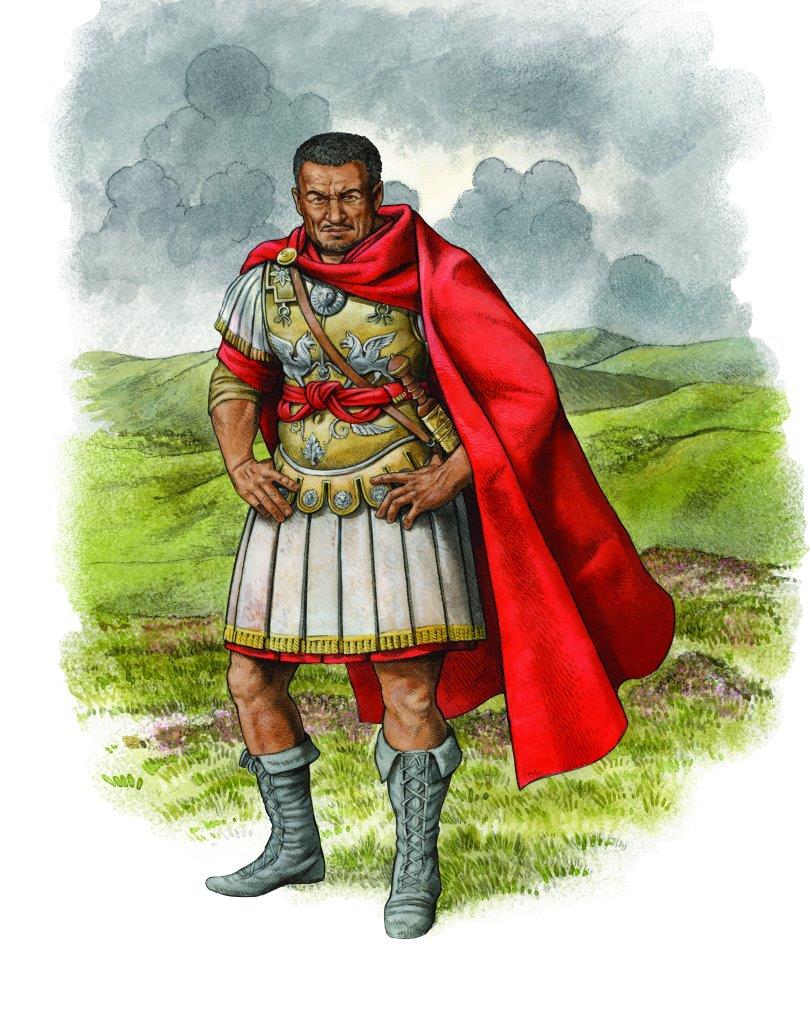
Quintus Lollius Urbicus, governor of Roman Britain in the mid-2nd century AD.
The Syrian Archer
Around 2,000 years ago, a man stationed at Bar Hill Fort inscribed his name, Ebutius, into his iron hammer. Ebutius may have been one of the many auxiliary soldiers who were recruited from across the Roman Empire.
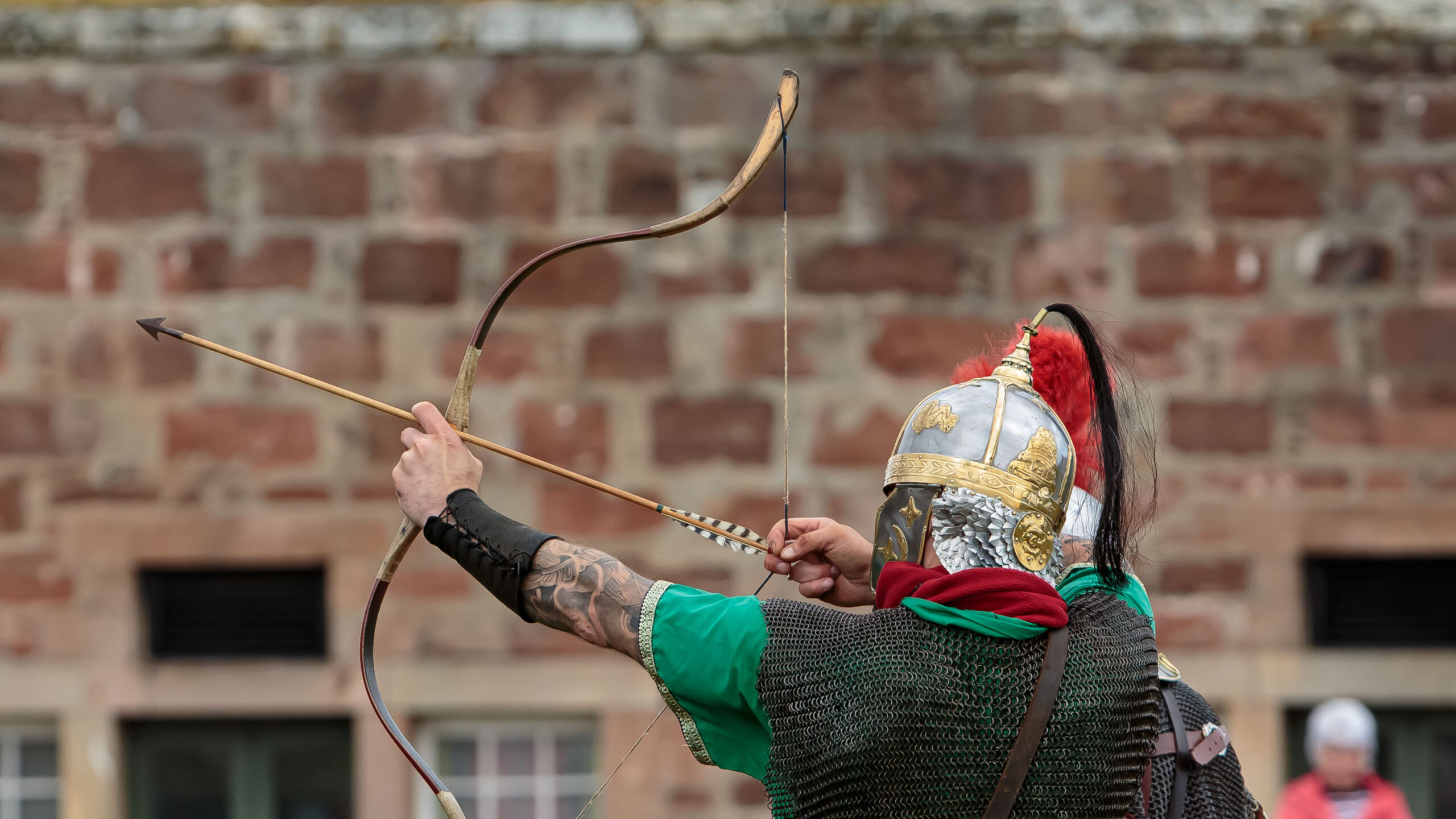
The Romans did not allow men from conquered lands to become legionary soldiers and paid them less than their legionary counterparts. However, after 25 years of service, they were rewarded with Roman citizenship. Citizenship was greatly important for anyone living in the Empire. Without it you couldn’t vote, marry, or even run your own business to make a living.
Coming from different cultures across the Empire, auxiliary troops were often grouped according to their homeland.
It is possible that Ebutius was one of the Cohors I Hamiorum Sagittaria, a cohort of 500 archers from the city of Hama, in modern-day Syria. The Hama were well known for their awesome archery skills. They used powerful bows that would prove useful in hunting game to supply the troops with food, as well as defend the Roman frontier.
After arriving around 120 AD, the cohort was sent northwards from Hadrian’s Wall to the Antoine Wall from 142 – 157 AD, before returning southwards again to Hadrian’s Wall. During their time here, the archers left behind evidence of their lives and culture such as tombstones and tools.
Off Duty
Soldiers of all ranks could enjoy their free time whilst off duty. Many soldiers would have enjoyed spending time with their friends and families in the forts or local towns. And they would have been shopping, relaxing, or playing games.
Another popular pastime was visiting the local bath. Remains of roman baths can be found at every fort along the Antonine Wall. Bathing was important all ancient Romans, and bath houses weren’t just a place to get clean, but also a place to socialise and sometimes even play games.
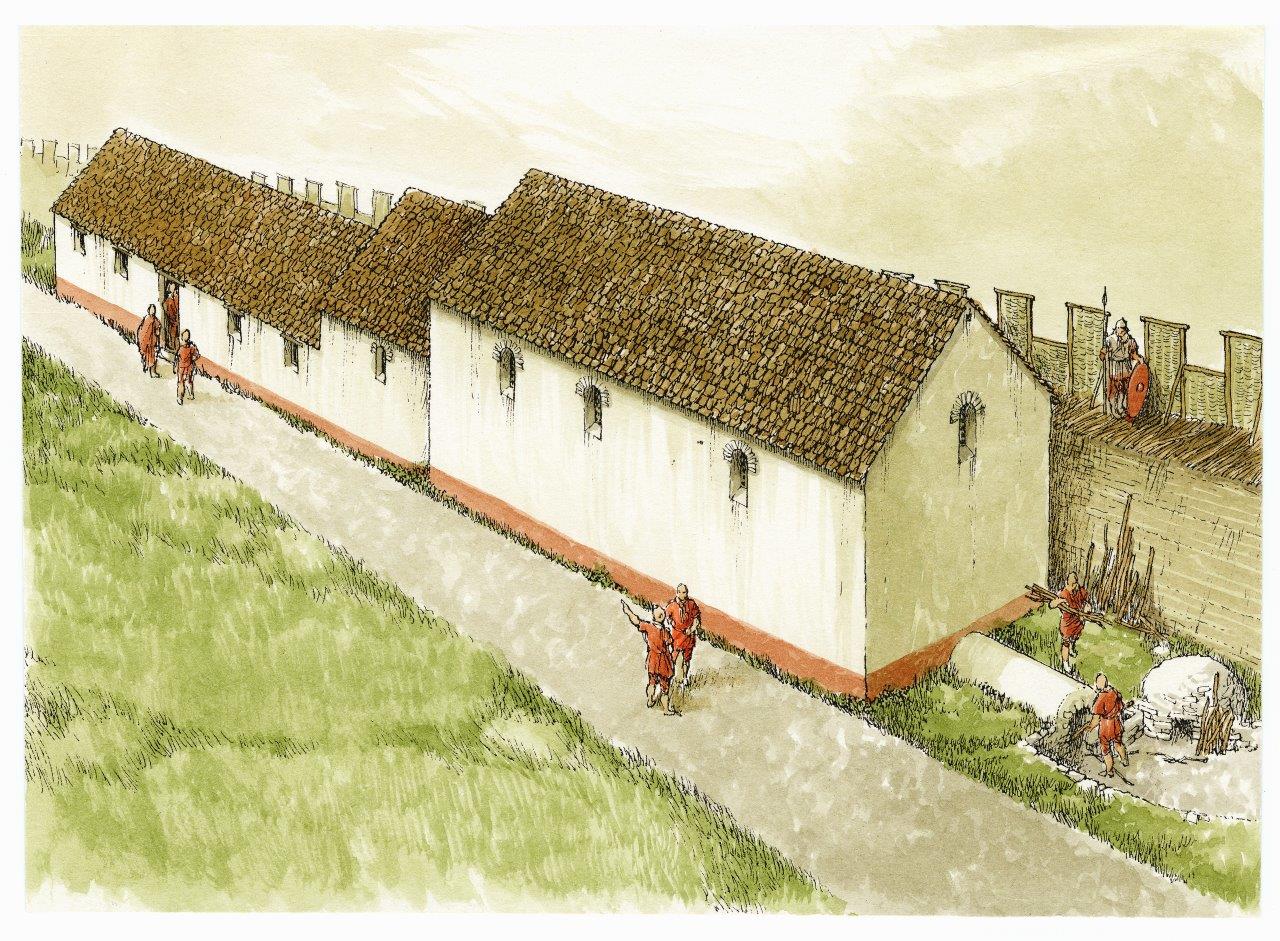
An illustration of the bath-house at Bar Hill Fort. The fort, excavated in 1902-1905 is the highest fort on the line of the Antonine Wall.
A gaming board was found inside the remains of a Roman bath house in Bearsden, Glasgow! The Romans also used tools to help keep themselves clean, such as a strigil; a long piece of curved metal used to scrape oils and dirt off the body. A replica strigil as well as other items for daily use can be seen in the Go Roman: Off Duty handling box.
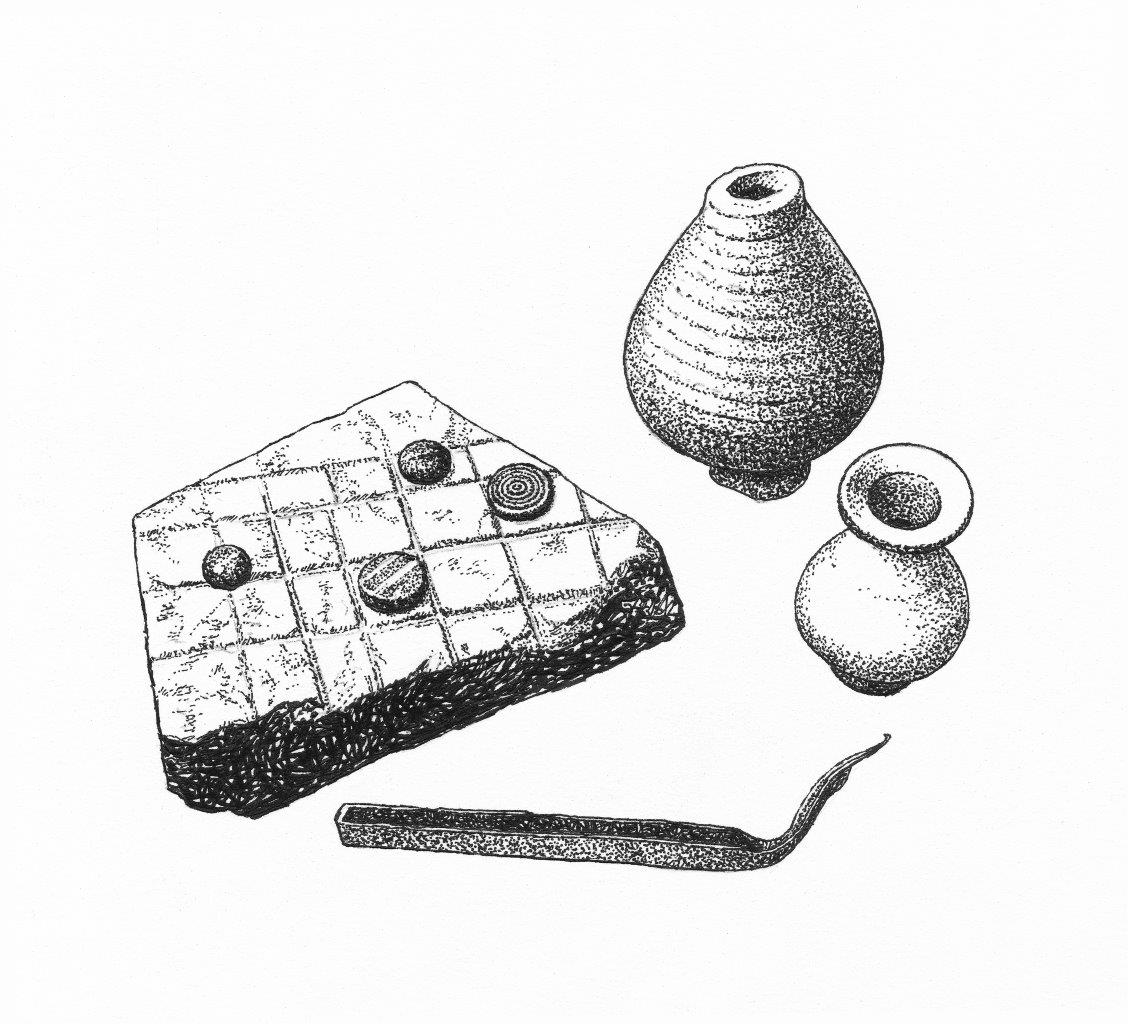
An illustration of pots and utensils found during excavations at Bar Hill Fort bath-house on the Antonine Wall. The fort was excavated between 1902-1905 and is the highest fort on the line of the Antonine Wall. People would have used the pots for storing oil.
Roman Women
Although men below the rank of centurion were not allowed to marry, many still formed meaningful relationships with women and even had children.
Women travelling through the Roman Empire have left their mark. Evidence such as letters and graffiti which give us some insight into their lives. We don’t know much about her, but a North African woman named Vibia Pacata, for example, dedicated an altar to the goddess of the Crossroads with her husband Flavius Verecundas, a centurion at Westerwood.
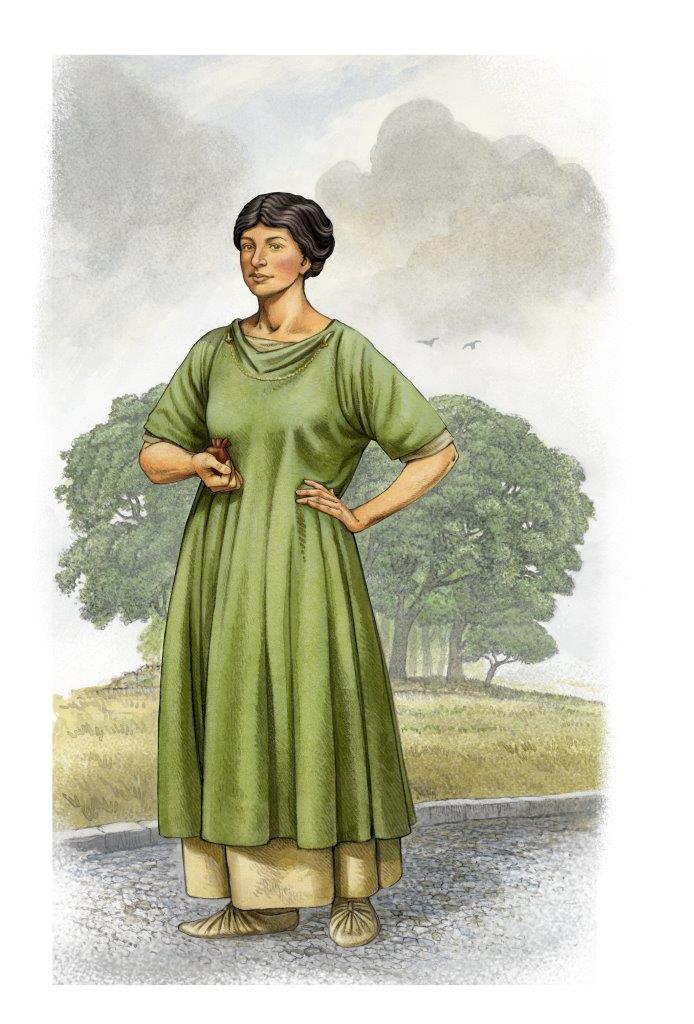
This illustration shows Vibia Pacata in about AD 150.
Other women have only left traces of their existence along the wall. Such as Aurelia and Materna, who scratched their names onto pots found along the wall. Unfortunately, time has erased their lives and identities
Food and Cooking
One of the most intriguing items in the Go Roman: Food and Cooking handling box, is a deep bowl with ridges and a series of small holes. This is a cheese press.
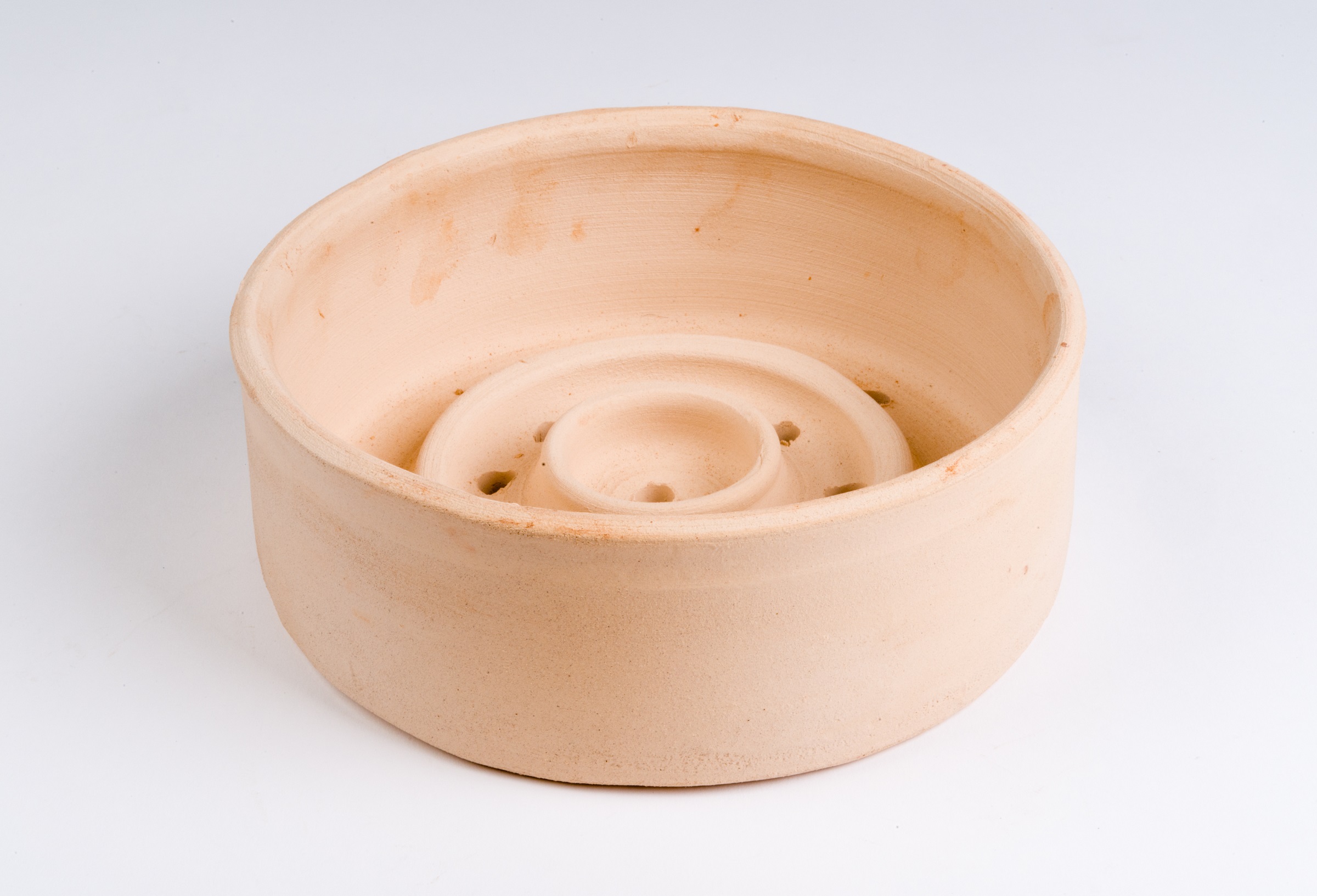
People in Britain made and ate cheese long before the Romans arrived. However, when they arrived, they brought new cheese-making techniques with them, such as creating hard cheese using sheep’s milk. Cheese was such a staple of the Roman diet, that each soldier received one ounce of cheese as part of their daily ration.
Soldiers lived in barracks of eight and would likely have taken turns to cook. Higher-ranking officers had slaves to prepare meals for them and could afford more luxurious crockery imported from abroad. For example, red Samian ware, such as the one in the handling box, arrived from Gaul (France). It was very expensive! Cinnamus was a well-known potter from Gaul. He made beautifully decorated Samian wares that has been discovered across the Empire, including along the Antonine Wall.
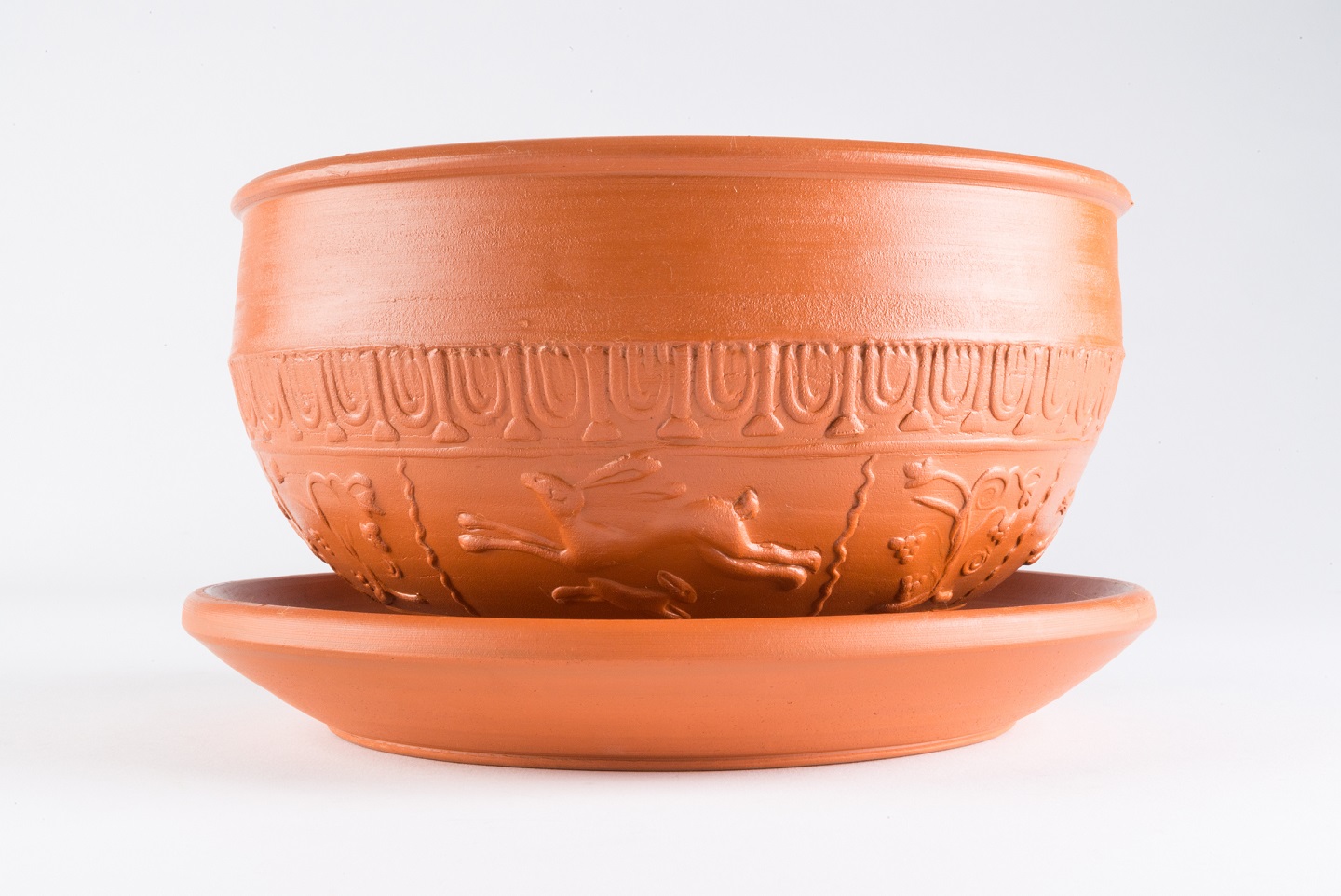
Go Roman Handling Boxes
Roman occupation of Scotland forms a short but fascinating period of our history. The Go Roman handling boxes contain interesting replica archaeological finds that help to bring Roman history to life.
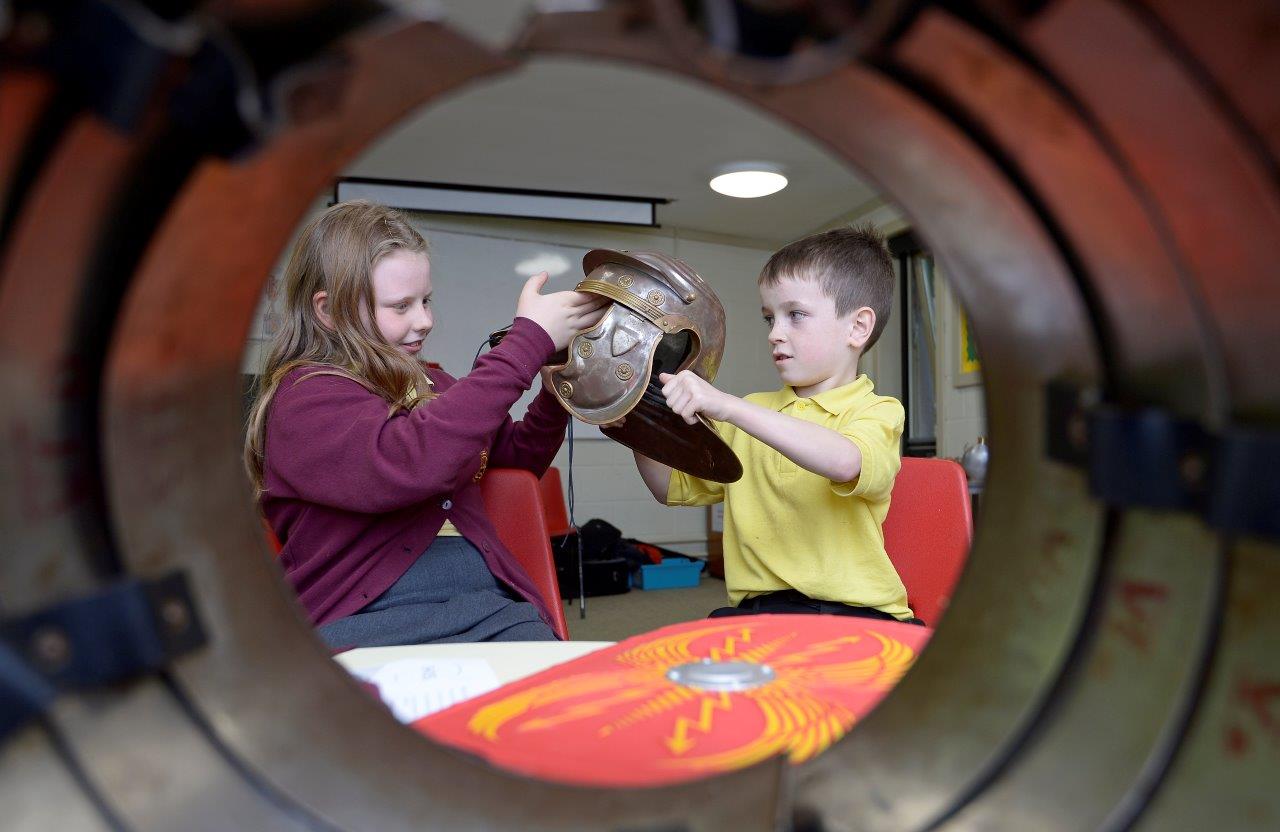
Did you know that you can borrow the Go Roman handling boxes? They contain fascinating replica items of archaeological items found along the Antonine Wall. There are also detailed information about the history of the items and the people who used them. The accompanying Teachers’ Notes offer fun ideas that will get you thinking about the lives of people along the Antonine Wall and how archaeology helps us to understand the past.
You can use the handling objects in a variety of ways for interdisciplinary learning. From props for a historically inspired drama performance to sparking debate on the history of citizenship and identity. There are four differently themed boxes for you to explore: The Legionary Soldier, The Syrian Archer, Off-Duty, and Food and Cooking. Get creative using these objects in exciting ways to achieve your learning goals.
If you’d like to borrow one of the boxes for up to three weeks for your school, home education or social groups, get in touch with us at worldheritage@hes.scot
The boxes are available for schools, home education or social groups to borrow for up to three weeks.

